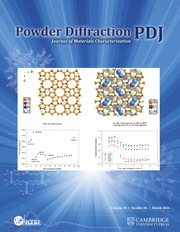Article contents
Phase evolution of MgB2 prepared under high pressure
Published online by Cambridge University Press: 29 February 2012
Abstract
MgB2 superconductors were synthesized at high pressure and high temperature (HPHT) using pure Mg and B as raw materials. The effects of the experimental conditions such as pressure and temperature on phase evolution were studied using X-ray diffraction (XRD), scanning electron microscope (SEM), and DC magnetization techniques. Results showed that high pressure and high temperature are two important factors for synthesizing the MgB2 phase. Stable MgB2 can be most effectively obtained in a pressure-temperature region from 3 to 6 GPa and between the melting points of Mg up to 1100 to 1300 °C. MgB2 starts to decompose into MgB4 at higher temperatures and pressures. The decomposition temperature of MgB2 increases with increasing pressure. The superconducting transition temperature Tc(bulk) was measured to be 38.0 to 38.8 K for MgB2 prepared at 900 to 1000 °C under 3 GPa. The larger grains and better crystalline perfection contribute to the higher Tc(bulk) and the narrower ΔT.
- Type
- Technical Articles
- Information
- Copyright
- Copyright © Cambridge University Press 2008
References
- 1
- Cited by




